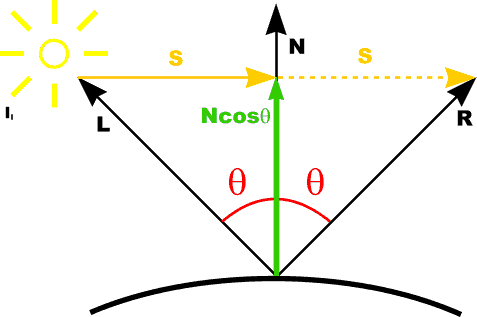I know the formula for calculating the reflection vector given the incident and normal vector, but the example that I've seen have only been where the angle between the incident and normal vector have been < 90degrees, like so:

But what is the reflection vector if the incident vector approaches from behind the surface plane, like in my example:

Is the reflection vector i denoted "roughly" the angle of the reflection vector?
Sorry if this seems like a stupid question, i just want to know what kind of reflection vector i will get if the light in my shader shines it's incident vector onto the back face of a surface.







